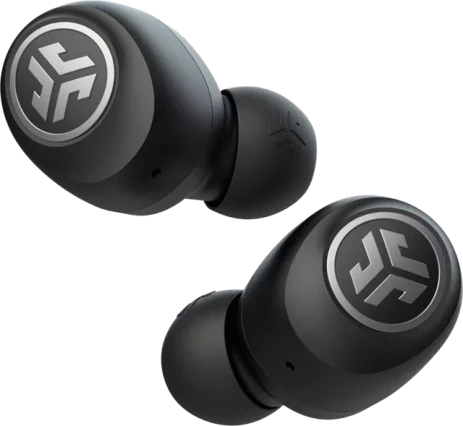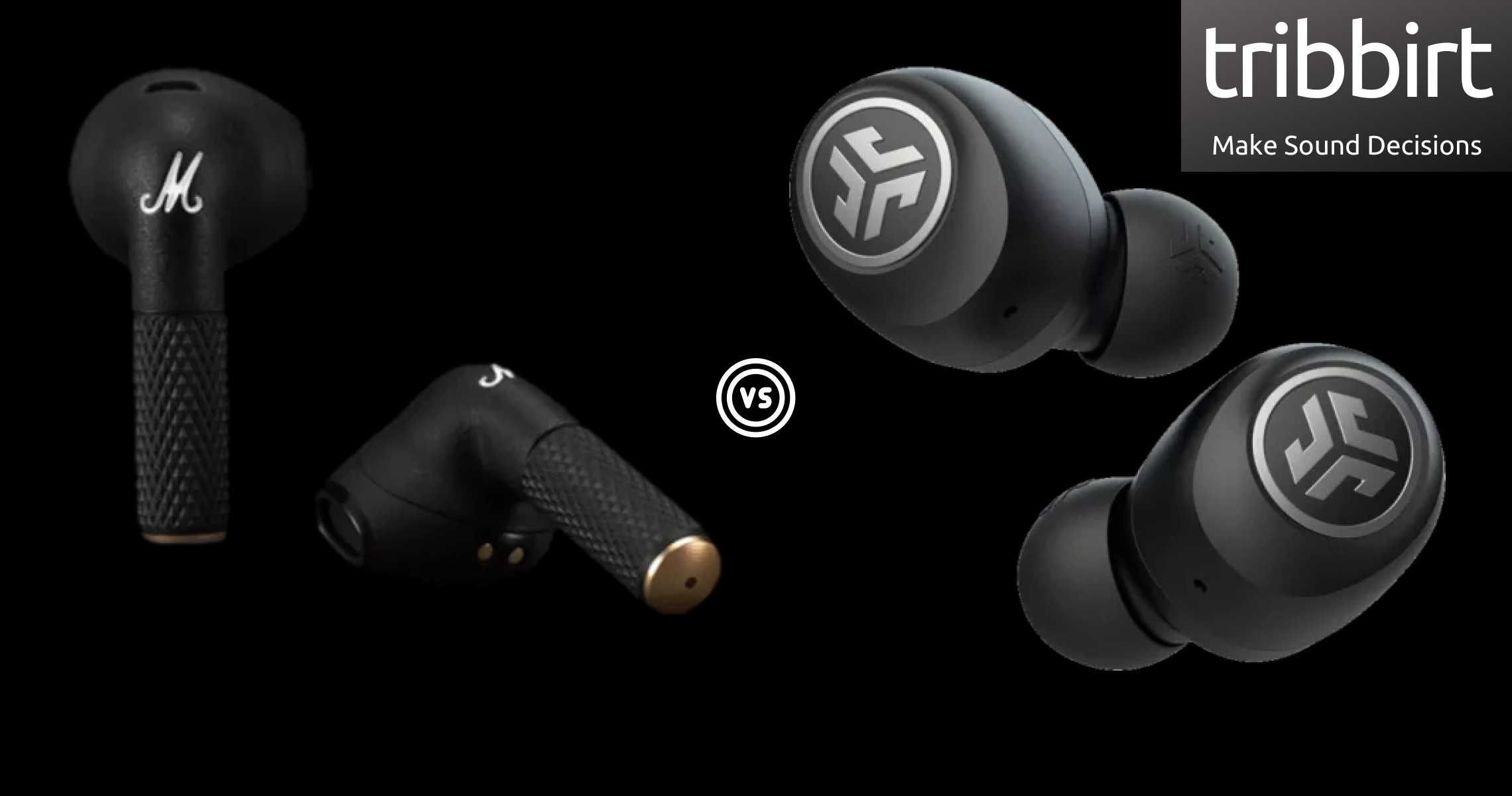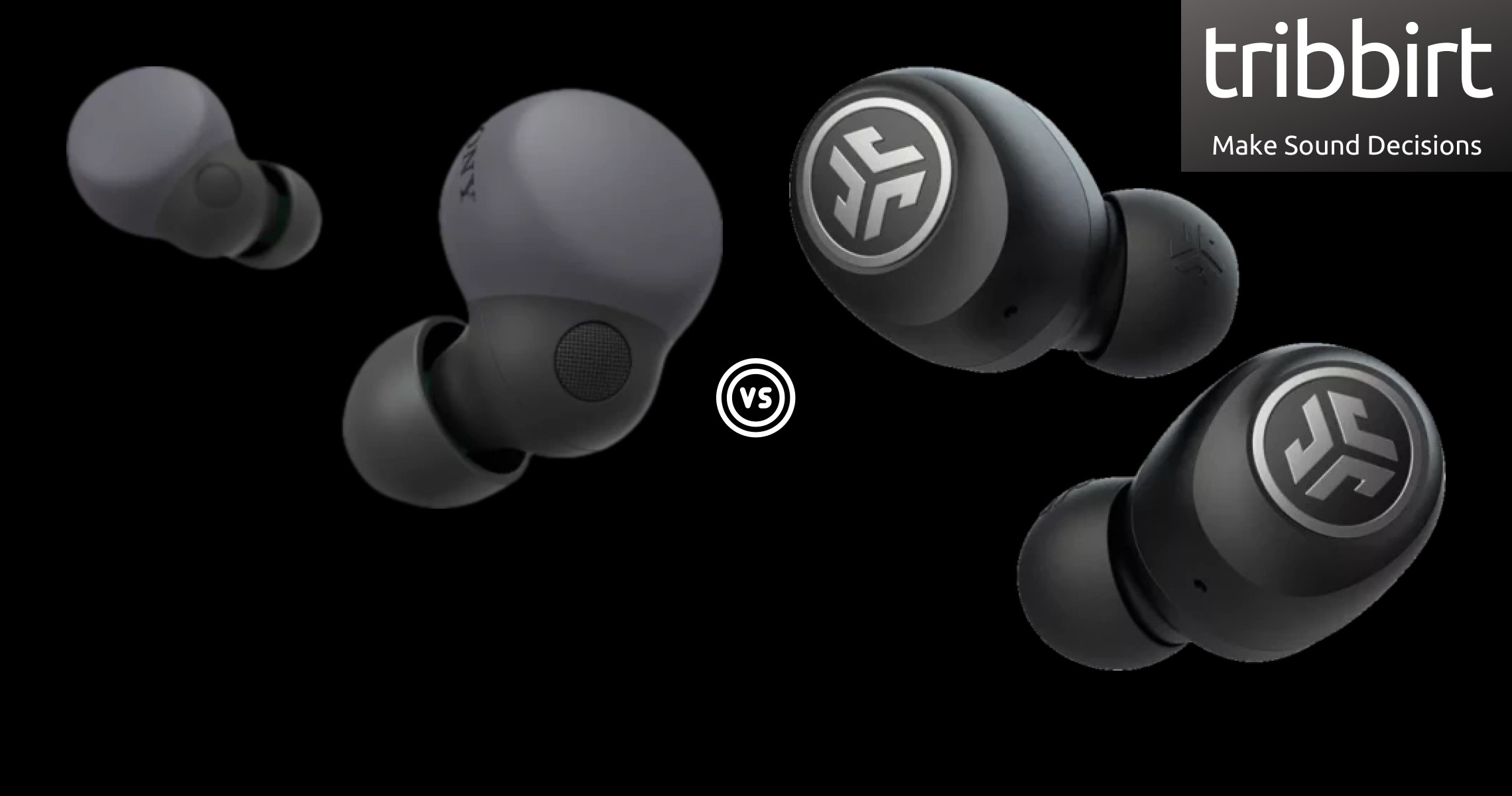IP ratings refer to the rank of protection given by an enclosure, against solids and water. In the format of IPXX, 'X' represents a number The first value of the IP rating refers to protection against solids such as dust, followed by the one that refers to protection against liquids (water).
Having a value of IP44, the JLab Go Air's rating is read as, the first value of 4 denotes that they are protected against objects greater than 1.0mm such as wire, and of liquids that they can withstand low pressure spray similar to that of a shower head when tilted at 180° for 10 minutes. In comparison to the JLab Go Air, Sony WF C500 have a rating of IPX4 meaning that
no data available to specify a protection rating
and that of liquids is that,
they both have the same rating against liquids
The JLab Go Air have a weight of 10g . We consider a lower weight best because lighter devices are easier to transport.
The Sony WF C500, at 10.8g
are heavier than the JLab Go Air with a difference of 0.8g
For a device to be true wireless it must have no wires connecting any part of the device together, JLab Go Air are true wireless for this case since they don't have cables. This is an important distinction as some wireless earbuds have cables connecting the two earbuds together. Sony WF C500 also is true wireless since it has no cables linking the 2 earbuds together.
JLab Go Air are resistant to sweat
Sony WF C500's resistance to sweat makes both devices fit for use during long-distance running, marathons, cardio sweat workouts , etc
JLab Go Air have stereo speakers, what this means is that JLab Go Air's speakers deliver sound from independent channels on both left and right sides, this creates a richer sound and a better listening experience. The Sony WF C500 also have stereo speakers
JLab Go Air stay tightly in place, creating an acoustic seal that tones down background sounds and also prevents the device voice audio from leaking out at the same. Both Sony WF C500, and JLab Go Air have passive noise reduction which implies that they reduce ambient noise instead of actively using ANC to cancel it out.
The JLab Go Air driver unit is 8mm in diameter, the bigger the unit the more powerful, therefor producing better bass. The driver unit is the component that makes sound in the device, its size corellates with the loudness of the device. Sony WF C500 driver unit is 5.8mm in diameter,
which means that they have a smaller driver unit than that of JLab Go Air by 2.2mm
, a common assumption that driver units of a bigger size automatically produce better sound quality.
However, large drivers usually have difficulty producing high frequencies so yeah, larger drivers are capable of generating louder sound, but this does not mean that they deliver better quality sound. JLab Go Air's lowest frequency is at 20Hz, low-frequency response measures if and how well an audio device generates low frequencies that can be heard, and if it alters the signal while at it. Sony WF C500's lowest frequency is at 20Hz, this implies that
both devices produce equal bass
JLab Go Air's highest frequency is at 20,000Hz, high-frequency response indicates how well an audio component generates high audible frequencies and if it makes any adjustments to the signal while at it.
Sony WF C500's highest frequency is at 20,000Hz, this implies that
both devices produce equal treble
SPL, is the pressure level of sound, in decibels, dB, JLab Go Air's measurement is 103dB/mW. Devices with a higher sound pressure level are generally louder when supplied with any given audio source. The JLab Go Air's battery life is 5 hours, these last less than 5 hours of listening which is considered average before recharge.
A device's battery life is given by the manufacturer, and with more battery hours, you get to use it for longer and requires fewer chargings. Sony WF C500's battery life is
more than that of JLab Go Air by 5 hours
. Each time you recharge your earbuds, they get a little less listening time. The effect is barely noticeable at first, but over time, your wireless earbuds will no longer play for long like they used to.
The battery life of the charging case is given by the vendor, and the JLab Go Air's case is said to have a charge of 15 hours. A charging case with a longer battery life allows you to recharge your earbuds on the go many times before having to recharge the case itself. Sony WF C500's charging case has a battery life of 10 hours,
less than that of JLab Go Air by 5 hours
It requires 1.5 hours to fully charge the JLab Go Air's battery.
It is recommended to fully charge the battery before using the earbuds when they have been in storage for long periods. Sony WF C500 takes 2.5 hours to fully charge the battery,
more than that of JLab Go Air by 1 hours
The JLab Go Air have a battery level indicator, an indicator shows you when the device has a low battery. Its lights indicate the charging state of your device and case.
Sony WF C500 too have a battery level indicator, these allow you to determine the charging state of your device, whether fully charged, or having a low battery. The JLab Go Air have Bluetooth version of 5, Bluetooth is a wireless technology standard that enables data transfers between devices placed in range, using short-wavelength, ultra-high frequency radio waves. Sony WF C500 has a Bluetooth version of 5,
equal to that of the JLab Go Air
. Newer versions provide faster data transfers.
The JLab Go Air have a 10meters distance to connect via Bluetooth. Sony WF C500 have a maximum range of 9meters,
less than that of JLab Go Air by 1meters
The JLab Go Air have 2 microphones. Sony WF C500 microphones are 2,
equal to that of the JLab Go Air
. More microphones record better sound quality and enable the earbuds to filter out background sounds.
The JLab Go Air microphone sensitivity is measured at -38dBV/Pa. The extent of the analog or digital output signal from the microphone with its input stimulus is a calculation of its sensitivity. It's the 'loudness' of the voice that the microphone can recognize.
The JLab Go Air, so you can easily access the volume control, pause, play, mute, etc whichever features are supported on the earbuds. The Sony WF C500 also have a control panel on them. The JLab Go Air have a warranty period of 2 Years, the period of time that warrant free repair and adjustment services in case of a malfunction occurring under normal use that has followed instruction manuals.
If covered under the manufacturer’s warranty it is possible to get a replacement a malfunction occurs. Sony WF C500 have a warranty period of 1Years,
less than that of JLab Go Air by 1 Years
.
JLab Go Air support voice prompts. With voice prompts, you receive information via audio messages, say if there is an issue with the connection.
The Sony WF C500 also support voice prompts meaning the earbuds will notify you if the battery is low, and you need to recharge them.













